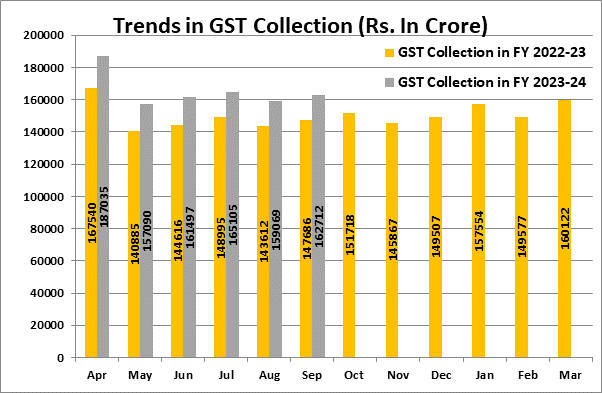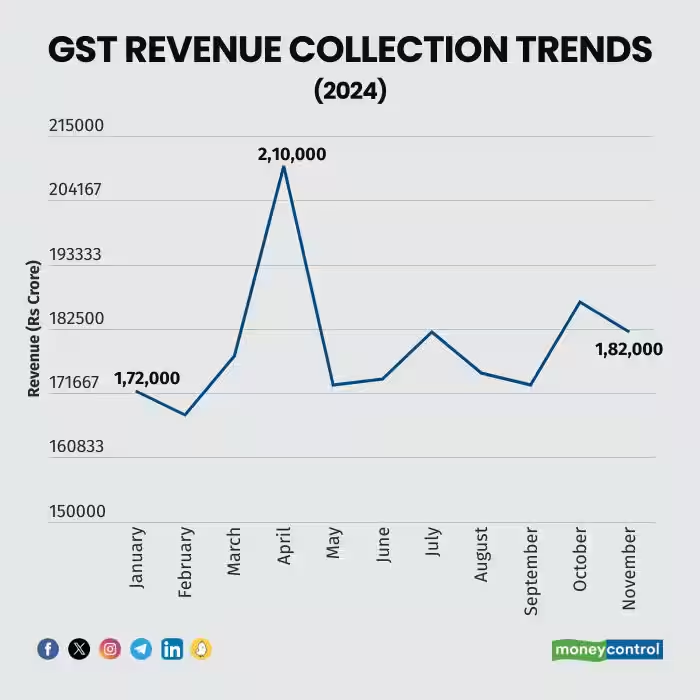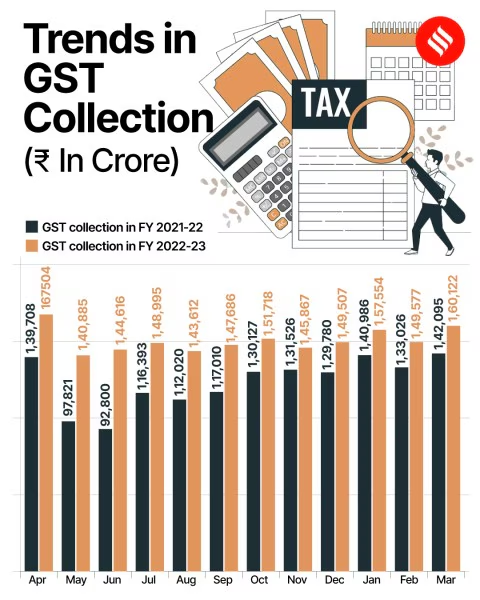GST Overhaul Ahead Of Diwali: If you’ve been keeping up with India’s economic news, chances are you’ve seen the chatter about the GST Overhaul Ahead of Diwali. Just as millions of families prepare for their biggest shopping festival of the year, the government is planning a tax shake-up that could reshape how Indians spend. The goal? Cut taxes on everyday items, simplify a complicated system, and put more money into people’s pockets. For consumers, it sounds like a dream. But for the government, it’s a high-stakes gamble — one that could risk billions in lost revenue. Imagine if the U.S. slashed nationwide sales tax right before Christmas. Shoppers would cheer, but Uncle Sam’s treasury would feel the pinch. That’s exactly the kind of trade-off India is staring at.
GST Overhaul Ahead Of Diwali
The GST Overhaul Ahead of Diwali is shaping up to be one of India’s most significant economic moves in years. For consumers, it’s a festival-season bonus — lower prices on essentials, vehicles, electronics, and insurance. For businesses, it’s a chance to ride a demand wave. But for the government, it’s a tricky balancing act between generosity and fiscal stability. Diwali 2025 will not just be remembered for fireworks and sweets but for a tax reform that could redefine India’s consumption story.

| Aspect | Details |
|---|---|
| What’s changing? | India’s GST system will shrink from 4 slabs (5%, 12%, 18%, 28%) into just two main rates: 5% and 18%. Luxury/sin goods face a 40% levy. |
| Consumer impact | Essentials, small cars, bikes, insurance, and electronics to become cheaper. Example: two-wheelers may drop from 28% GST to 18%. |
| Revenue risk | Loss estimated between ₹50,000 crore – ₹1.1 trillion (~0.15%–0.3% of GDP). |
| Economic outlook | Consumption could rise by 0.6%–0.7% of GDP. Markets already reacting positively. |
| Timeline | GST Council approval expected September 2025, rollout in time for Diwali shopping season. |
| Official source | GST Council Official Website |
A Brief History of GST in India
When India rolled out GST in 2017, it was hailed as a “One Nation, One Tax” revolution. The system replaced a chaotic patchwork of state taxes, service taxes, excise duties, and more. Businesses no longer had to navigate dozens of rules across states.
But there was a catch. Instead of a single tax rate, India introduced multiple slabs — 5%, 12%, 18%, 28% — plus cesses on luxury and sin goods. While the goal was fairness, it also created confusion. Small businesses struggled with compliance, and consumers were left scratching their heads about why biscuits were taxed at 18% while cakes were at 12%.
Over time, pressure grew to simplify. Economists argued that too many slabs defeated the very purpose of GST. That’s why this new two-slab model is seen as a big leap toward simplification.

What’s Changing in the GST Overhaul Ahead Of Diwali?
The upcoming reform will:
- Collapse the 12% slab into 5% or 18%, depending on the product.
- Keep essentials at 5%, ensuring affordability for households.
- Put most goods and services at 18%, creating a “standard rate” for simplicity.
- Impose a 40% levy on luxury and sin goods like cigarettes, alcohol, and luxury cars.
This reduces complexity for businesses and makes tax structures easier for consumers to understand.
Consumer Gains – What Families Will Actually Save
Let’s break this down with examples.
- A family buying a two-wheeler worth ₹1 lakh currently pays 28% GST = ₹28,000 in taxes. Under the new regime (18%), they pay ₹18,000 — a straight saving of ₹10,000.
- A middle-class household paying ₹20,000 annually for health insurance saves ₹3,600 if GST on insurance premiums drops from 18% to zero.
- Students purchasing a 32-inch TV for ₹15,000 will save about ₹1,500 as GST falls from 28% to 18%.
For lower and middle-income families, these savings can add up quickly. During Diwali — when households traditionally buy gold, clothes, appliances, and vehicles — the timing couldn’t be better.
But Who Pays the Price? The Revenue Risk
Lower taxes mean lower collections. That’s the catch.
- Reuters projects the reform could drain around $20 billion annually.
- UBS estimates a revenue loss of ₹1.1 trillion, or 0.3% of GDP.
- Even conservative figures put the shortfall at ₹50,000 crore, or 0.15% of GDP.
Governments at both the central and state level rely heavily on GST revenues to fund infrastructure, education, and healthcare. A sudden dip could create budget stress. Some states are already signaling they may demand compensation from the federal government.

Why Announce It Before Diwali?
The timing is no accident. Diwali is India’s biggest shopping festival, a season when families traditionally splurge on clothes, electronics, cars, and real estate. By slashing GST before the festival, the government is essentially gifting households a tax rebate right when spending peaks.
It’s both an economic strategy (to pump consumption) and a political move (to score points with voters). Markets have already responded — auto and consumer goods stocks are climbing in anticipation.
Industry Reactions
- Auto industry: Excited about a potential demand revival. Small cars and bikes, once burdened with high taxes, could see double-digit growth in sales.
- Insurance companies: Cautiously optimistic. Dropping GST will encourage policy adoption, but margins may shrink if premiums don’t rise.
- Consumer goods sector: FMCG companies expect a sales boost as essentials become cheaper.
- Cement and housing: Lower tax rates on cement could reduce construction costs, providing relief to India’s housing market.
How States Might Respond?
India’s states are partners in the GST system, sharing revenues with the central government. But many states already struggle with deficits. A dip in collections could push them to either:
- Demand higher compensation from the center.
- Cut back on spending in welfare and development.
- Lobby for selective exceptions or surcharges.
The political negotiations here could get messy.
Lessons from Abroad
India isn’t the first country to wrestle with sales tax reforms.
- The European Union’s VAT system usually operates with one or two standard rates and very few exemptions. That’s what India is now aiming for.
- In the United States, sales taxes vary by state, but each state typically has a single standard rate, making compliance easier.
The trend globally is toward fewer rates, simpler systems. India’s overhaul is a step in that direction.

Implementation Challenges
Simplifying slabs sounds great on paper, but in practice:
- Businesses will need to update their accounting systems and billing software.
- Retailers must adjust pricing and marketing strategies.
- States may argue about which items go into which slab.
There’s also the risk of legal disputes, especially if industries feel wrongly placed in the higher slab.
Professional and Investor Insights
- For businesses: Prepare for a short-term compliance transition, but expect smoother operations long-term.
- For investors: Sectors like autos, cement, insurance, and consumer goods are likely winners. Consider portfolio adjustments accordingly.
- For policymakers: This is a balancing act — keeping consumers happy while preventing a revenue crunch.
Practical Advice for Consumers
- Wait for rollout: If you’re planning a major purchase (car, TV, or insurance policy), waiting until after the reforms kick in could save thousands.
- Track product categories: Not everything gets cheaper. Luxury goods could even get more expensive.
- Save or invest the difference: Treat the GST cut as extra cash — don’t blow it all.
Will Modi’s GST Reforms Tame Inflation and Push RBI Toward Cuts?
India’s Aggressive Investment Reforms: GST Relief, PLI Tweaks, and a Simpler Future
Insurance Stocks Surge on GST Exemption Talk – Should Investors Buy In Now?
The Road Ahead
The GST Overhaul Ahead of Diwali is part of a larger vision for “GST 2.0” — a system that’s leaner, simpler, and easier to comply with. If it succeeds, India could align itself more closely with global best practices.
But make no mistake — it’s a gamble. The government is betting that happier consumers and stronger spending will outweigh lost revenues. If it pays off, India could see a consumption-driven growth surge. If not, brace for fiscal debates and demands from states.










